#Bernard Horsfall
Text
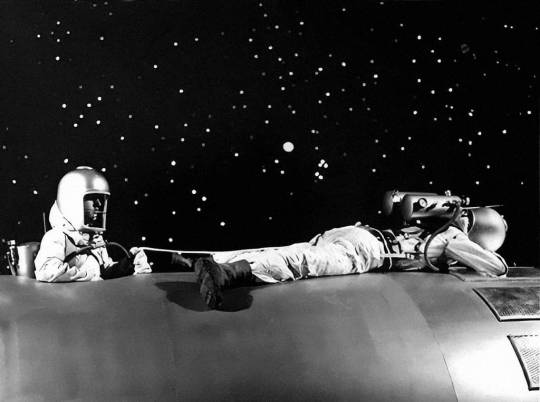
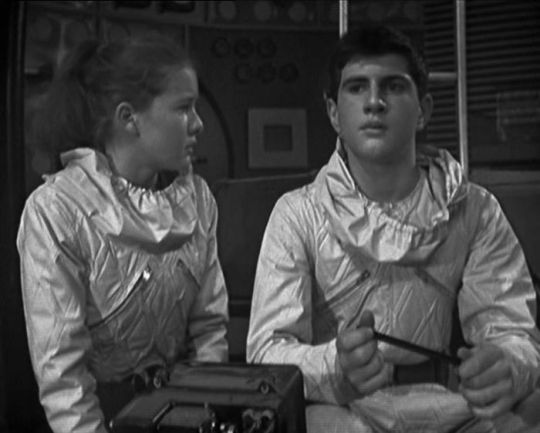
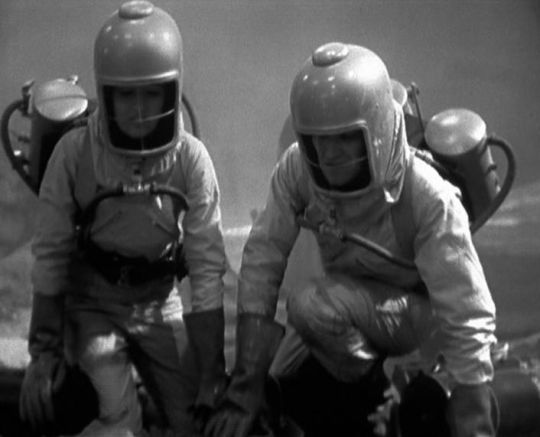
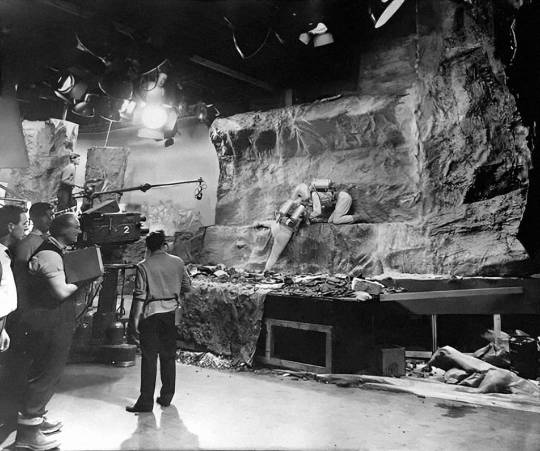
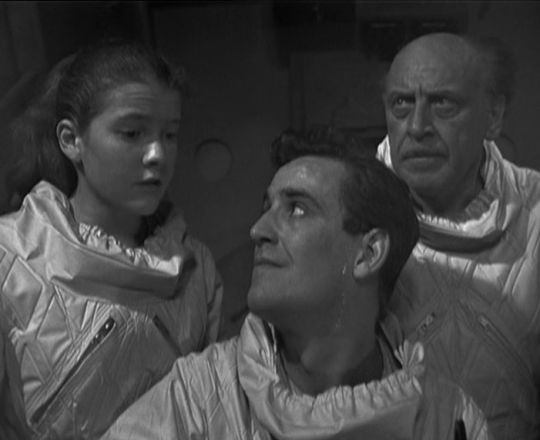
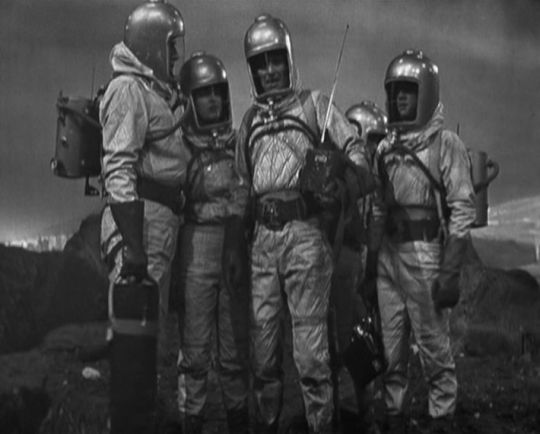

Pathfinders to Mars (ABC, 1960 - 1961)
"You know, Henderson, the progress of true science depends not only on the cold, calculating types, but also on the adventurers and dreamers. There's a place for all of us under the sun."
"Yes... as long as we don't get too close to it."
#pathfinders to mars#abc#children's television#classic tv#1960#guy verney#malcolm hulke#eric paice#gerald flood#pamela barney#george coulouris#stewart guidotti#hester cameron#hugh evans#astor sklair#peter williams#bernard horsfall#maurice durant#lisa peake#ian sadler#the pathfinders serials seem to have been in production nearly back to back‚ with very little gap between transmission#but that didn't mean there weren't further shakeups between Space and Mars; the two younger children were written out (the hamster remains#don't worry)‚ replaced by the niece of Flood's character tagging along; Peter Williams patronly father figure also disappears after a brief#appearance in the first ep‚ leaving Flood's genial sciencey everyman to take the lead focus. the most notable introduction is surely#the legendary George Coulouris (a former member of Welles' Mercury Theatre) as a slightly loony alien life truther who bluffs his way onto#the voyage; bf was present for me watching this with my dad and he DETESTED this new character‚ a perpetually suspicious and treacherous#hindrance to every one else whose stupid schemes and mischief routinely put eveyone in mortal danger. i get it... but then he's kind of fun#too‚ for all his ridiculousness... ymmv of course. the Coulouris character is perhaps the closest parallel we can see with Doctor Who‚#bearing more than a little similarity to the original Hartnell characterisation (by which i mean the very very original‚ in the first few#serials; purposefully mysterious‚ even antagonistic‚ often at odds with his fellow travellers but with a bond with a young girl among them)
12 notes
·
View notes
Text


Robert Cunninghame-Graham 1st President of National Party of Scotland and the first MP to call himself a socialist died 20th March 1936.
To me Robert Cunninghame-Graham is one of the most interesting of our 19th/20th century politicians.
please just like the post as a historical entity, and just dinnae........
Cunninghame Graham was an author, traveller explorer, politician and adventurer, he was a man of extraordinary talents, tireless energy and considerable courage. His friend and contemporary Joseph Conrad remarked, “When I think of Cunninghame Graham, I feel as though I have lived all my life in a dark hole without seeing or knowing anything.” and I have to agree with him, I use the term Polymath now and then for some subjects I post about, he was that, and more.
Born in London in 1852, educated at Harrow, but always, always, a Scot to his marrow, Cunninghame Graham was a descendant of the Earls of Menteith and the son of a laird whose lands eventually extended from Gartmore in Stirlingshire to Ardoch in Dunbartonshire and Finlaystone in Renfrewshire. It was there that Robert was largely brought up, coming heavily under the influence of his Spanish grandmother.
After schooling, at Harrow, Robert finished his education in Brussels, Belgium, learning, among other things, the art of swordsmanship at which he became an expert.
In a crowded life — Cunninghame Graham was variously a Member of Parliament, a gaucho in South America, a fencing master, a founder member of both the Independent Labour Party and the Scottish National Party, a rancher, horse-trainer, buffalo hunter and Long Rider through North and South America — he wrote prolifically. He called himself, "Don Roberto,". He also enjoyed a journey into Morocco, disguised as an Arab Sheik, he was, as they say, some man!
In 1872 Cunninghame Graham rode on horseback 600 miles up the river Parana to the Iguacu Falls, researching the role of the early Jesuits with the local Indians. His subsequent book, A Vanished Arcadia, was made into a film, The Mission starring Jeremy Irons. He lived for a time in Argentina, where his extended family had a ranch, by way of Uruguay and Paraguay. He became an expert horseman, riding with gauchos, and his admiration for these men was such that he often wore gaucho clothes when back home, he must have been quite a sight!
He wrote that one day on a knoll in the pampas he met a man who greeted him in halting Spanish. Cunninghame Graham suggested he speak in English and referred to the view. The man, said, perhaps hearing a Scots accent for the first time in 20 years, “Aye, but man, it’s naething tae the view off Dumyat.”
Don Roberto married to an equally colourful and talented woman that he met in Paris, Gabrielle de la Balmondiere, who had been described as a Chilean princess. In fact, she was an actress called Caroline Horsfall, who went on to be a published poet. Among her many admirers was WB Yeats.
His contact with poor people everywhere made him a socialist before that term was even coined. On returning from South America, he rapidly took up political campaigning and in 1886, there being no Labour Party, he stood on a radical ticket for the Liberals in North West Lanarkshire, winning comfortably.
On 12th September 1887 he was suspended from parliament for making what was called a "disrespectful reference" to the House of Lords. He was the first MP ever to be suspended from the House of Commons for swearing; the word was damn.
He was suspended from the House of Commons in December 1888 for protesting about the working conditions of chain makers. His response to the Speaker of the House, "I never withdraw", was later used by George Bernard Shaw in Arms and the Man.
He truly was a courageous man – in 1887, he was beaten up badly by police at the original Bloody Sunday in Trafalgar Square and was jailed for six weeks.
His leftward move and meetings with James Keir Hardie led him to co-found the Scottish Labour Party with Keir Hardie, but has been largely airbrushed out of the history of the party, due to his Scottish Nationalist views.
Its manifesto included nationalisation of land and minerals, an eight-hour day, State insurance, the abolition of the House of Lords and all hereditary offices, home rule for Scotland, the abolition of the liquor tariff and the disestablishment of State Churches.
Yet Labour disappointed him, don’t they always, and after World War One – he volunteered a the age of 62 and became a horse-buyer for the Army – his growing nationalism saw him become president of the National Party of Scotland, the forerunner of the SNP. On 23rd June, 1928, in the King’s Park, Stirling, he presided at its inaugural rally.
He was friends with everyone from Buffalo Bill Cody to George Bernard Shaw, had his portrait painted by Sir John Lavery, knew the Glasgow Boys cirlce of artists personally, was close friends with the writers Joseph Conrad and G.K Chesterton, and generally personified the word kenspeckle. A writer of over 30 books himself, there is a seat dedicated to Cunninghame Graham in the Scottish Storytelling Centre in Edinburgh with the inscription: "R B 'Don Roberto' Cunninghame Graham of Gartmore and Ardoch,
Few Scots actually know of yer man, but In Entre Rios, in the north east of Argentina is the Instituto Magnasco, in Gualeguaychu (pronounced Wally-wy-chew) there is a Cunninghame Graham library and museum! His books are available there to read on the premises, and the Smith’s library is based on that facility.
The Journalist and author, the late Rennie of the Stirling Smith Art Gallery and Museum wrote a booklet about Robert Cunninghame-Graham, called Braw Gallant, he wrote of the man : “He was a pioneer of socialism and Scottish nationalism, fought unemployment and poverty, backed the rights of native peoples against colonialism and short-sighted development, supported free speech, was an active conservationist, got caught up in the Irish question, attacked brutal wars when it was not fashionable to do so and was prepared to die or be imprisoned for his beliefs.
“The words knightly and chivalrous come to mind.”
Robert Cunninghame-Graham retired to Argentina, where he continued to be active, he would still ride daily while in his 80′s, he died on this day in 1936 of pneumonia at the Plaza Hotel in Retiro. Such was his standing he lay in state in the Casa del Teatro and received a countrywide tribute led by the President of the Republic of Argentina, before his body was shipped home to be buried beside his wife, in the ruined Augustinian Priory on the island of Inchmahome, Lake of Menteith, Stirlingshire. There is a memorial to him at at Castlehill, Dumbarton. The monument, which is built of Scottish stone, but also contains stones from Argentina, Uruguay and Paraguay.
Between these stones is a medallion of Cunninghame Graham (in his latter years) by the Liverpool born artist Alexander Proudfoot, RSA, who taught sculpture at Glasgow School of Art. Below the medallion is an epitaph which reads:
"Robert Bontine Cunninghame Graham 1852-1936 - Famous Author - Traveller and Horseman - Patriotic Scot and Citizen of the World - As Betokened by the Stones above. Died in Argentina, interred in Inchamahome - He Was a Master of Life - A King Among Men"
On the Argentinian stone, there is a portrait of his favourite horse Pampa, an Argentine mustang which he had rescued from pulling trams in Glasgow and rode for some 20 years and the inscription:
"To Pampa my black Argentine who I rode for twenty years without a fall. May the earth lie light upon him as lightly as he trod upon its face. Vale...or until so long. Don Roberto."
One of Pampa's hooves is buried beneath the monument.
The monument suffered considerable damage through vandalism during the 1970s and was moved in May 1981 to the village of Gartmore (where, until 1900, Gartmore House had been the principal seat of the Cunninghame Graham family), and was unveiled on Cunninghame Graham's birthday (24 May) by the Argentinian Ambassador. It is currently in the care of the National Trust for Scotland. Despite the removal of the monument to Gartmore, the Cunninghame Graham Memorial Park at Castlehill is affectionately known as "the Mony" and the original site of the Memorial marked by a stone.
In 2012 the National Trust for Scotland carried out significant conservation work on the monument which was completed in time for the 160th anniversary of Cunninghame Graham's birth. A new stone was added to commemorate another of Don Roberto's horses, Pingo, and a new information panel was placed nearby, as seen in the photos, the painting is Don Roberto on Pampas, and recently sold at Christies for over 31 thousand pounds.
The pics are my own from a visit to Kelvingrove Art Gallery last month.
Aye ah ken this post has gone on a wee bit more than my usual, I hope you have enjoyed reading it, but please, go have a look at this wee article about the man by Dominic Hilton, on The Critic web page, it is quite amusing. https://thecritic.co.uk/from-gaucho-to-rive-gauche-and.../
10 notes
·
View notes
Text
Shout out to Classic Doctor Who staple player Bernard Horsfall




3 notes
·
View notes
Note
🌻 go crazy go stupid
If you watch any random classic who episode with me odds are there will be at least one actor who was in at least one completely unrelated part in another classic who serial, like martin jarvis and peter miles in Invasion of the Dinosaurs, who were also in vengeance on varos and doctor who and the silurians respectively, or fucking bernard horsfall who has a really distinctive voice and face and I jump up and down and point at the screen when he shows up in the mind robber, the war games, planet of the daleks, AND the deadly assassin.
1 note
·
View note
Photo



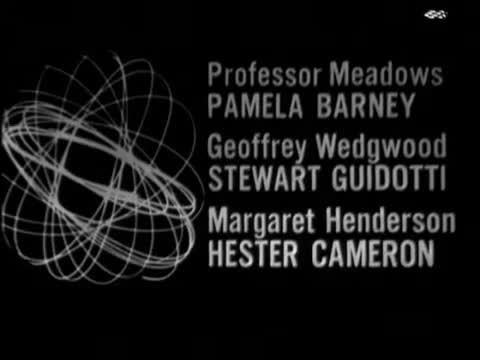


Pathfinders to Mars - ABC (UK) - December 11, 1960 - January 15, 1961
Science Fiction (6 episodes)
Running Time: 30 minutes
Stars:
Gerald Flood as Conway Henderson
George Coulouris as Harcourt Brown (credited as 'The Imposter' in The Imposter)
Stewart Guidotti as Geoffrey Wedgwood
Pamela Barney as Professor Mary Meadows
Hester Cameron as Margret Henderson
Hugh Evans as Ian Murray
Astor Sklair as John Field
Bernard Horsfall as Professor Hawkins
Peter Williams as Professor Norman Wedgwood
#Pathfinder to Mars#TV#Sience Fiction#1960's#ABC (UK)#Gerald Flood#George Coulouris#Stewart Guidotti#Pamela Barney#Hester Cameron
1 note
·
View note
Photo










“How did you know that?!”
Planet of the Daleks - season 10 - 1973
#doctor who#classic doctor who#classic who#third doctor#jon pertwee#planet of the daleks#taron#bernard horsfall#vaber#prentis hancock
179 notes
·
View notes
Photo








On Her Majesty’s Secret Service (1969) Peter R. Hunt
January 13th 2022
#on her majesty's secret service#1969#peter r. hunt#george lazenby#diana rigg#telly savalas#gabriele ferzetti#ilse steppat#bernard lee#lois maxwell#bernard horsfall#yuri borienko#angela scoular#ian fleming's on her majesty's secret service#o.h.m.s.s.#ohmss
33 notes
·
View notes
Photo

Caption This!
23 notes
·
View notes
Photo

Today I learned there was once a BBC 1959 adaptation of Campion, starring Bernard Horsfall and the internet turned up photographic proof for me.
#campion#albert campion#bernard horsfall#1950s#detectives#book adaptations#when i read that i could not imagine him in the role#but look#omg#i think my brain is a tiny bit broken now#(it seems to be lost or certainly half lost i think? unsurprisingly but TIL)#look at this mariocki!#did you know this?
17 notes
·
View notes
Text

Chancellor Goth as a iron man fan
Requested by: @4thdoctorjellybabies
2 notes
·
View notes
Text


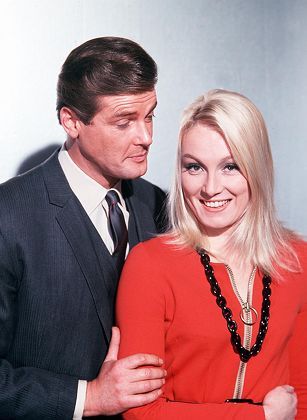

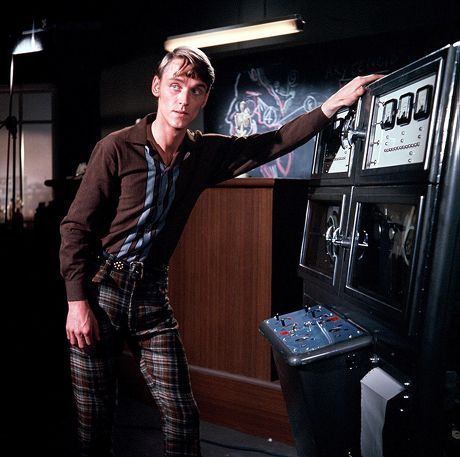
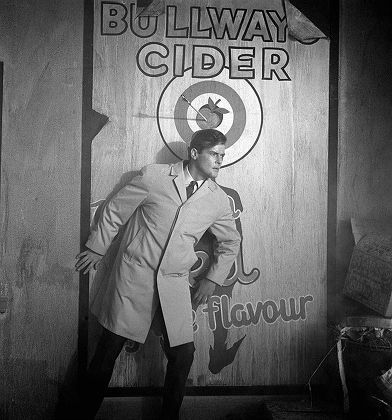

The Saint: The Death Game (5.17, ITC, 1967)
"You see, some people do not take kindly to the pressures I exert. Naturally, I have to enforce this by having them executed - preferably in such a way that it appears to be an accident. I should like to consider you two ideal candidates for my pressure department. Your starting salaries will be seventy-five thousand dollars a year."
"And we start with Templar."
#the saint#the death game#1967#itc#leslie charteris#leslie norman#john kruse#harry w. junkin#roger moore#angela douglas#alan macnaughtan#george murcell#john steiner#bernard horsfall#ivor dean#katherine schofield#stuart cooper#rick jones#michael anthony#karen ford#a weird one! feels very unlike The Saint tbh‚ more closely following the playfully strange style The Avengers had cultivated by this point#it's credited as script by Junkin (by this point the script supervisor on the series) and story by Kruse (an occasional contributor who'd#written a few of the eps that adapted full novels) and perhaps there's some story behind that which explains a slightly fractious episode#begins very self consciously weird and stylish‚ with Simon assailed by toy soldiers on a foggy London street‚ then pivots into psychology#and tearaway students‚ then shifts again to become a larger than life (but more familiar) international conspiracy thing headed by the ever#wonderful Murcell. it's an odd one. good old Bernard H gets to die dramatically and a very young John Steiner (later to become a familiar#face in Italian horror movies) goes Full Ham as one of the students who's a little too taken by the titular game of murder#but Murcell owns the episode doing his drawling european super villain shtick that ITC so often hired him for#a weird one but pretty fun‚ even if it does feel like two separate episodes mashed together
7 notes
·
View notes
Text

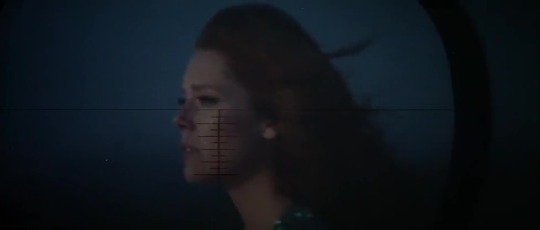

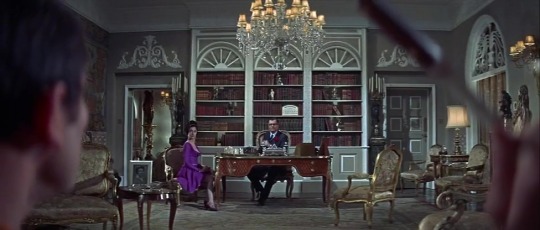

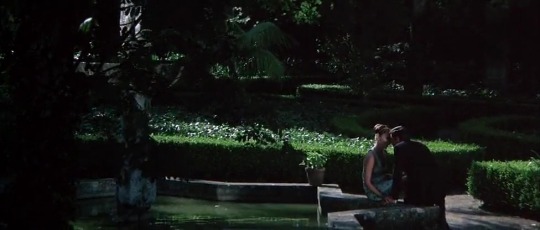




On Her Majesty's Secret Service (1969)
Director - Peter R. Hunt, Cinematography - Michael Reed
"The only thing you need know about me is that I pay my debts.
#scenesandscreens#on Her Majesty's Secret Service#James Bond#john gay#James Bree#Terry Mountain#virginia north#Irvin Allen#Geoffrey Cheshire#Yuri Borienko#Bernard Horsfall#desmond llewelyn#bernard lee#lois maxwell#george baker#telly savalas#gabriele ferzetti#Ilse Steppat#george lazenby#diana rigg#Helena Ronee#Ingrit Back#Zaheera#Mona Chong#Sylvana Henriques#Dani Sheridan#julie ege#jenny hanley#Anouska Hempel
46 notes
·
View notes
Photo




A beautiful skull.
2 notes
·
View notes
Photo

My copy of Davros signed by the late Bernard Horsfall. via /r/doctorwho https://ift.tt/3bxK3vq
0 notes
Photo









Robert Cunninghame-Graham 1st President of National Party of Scotland and the first MP to call himself a socialist died 20th March 1936.
Cunninghame Graham was an author, traveller explorer, politician and adventurer, he was a man of extraordinary talents, tireless energy and considerable courage. His friend and contemporary Joseph Conrad remarked, “When I think of Cunninghame Graham, I feel as though I have lived all my life in a dark hole without seeing or knowing anything.” and I have to agree with him, I use the term Polymath now and then for some subjects I post about, he was that, and more.
Born in London in 1852, educated at Harrow, but always, always, a Scot to his marrow, Cunninghame Graham was a descendant of the Earls of Menteith and the son of a laird whose lands eventually extended from Gartmore in Stirlingshire to Ardoch in Dunbartonshire and Finlaystone in Renfrewshire. It was there that Robert was largely brought up, coming heavily under the influence of his Spanish grandmother.
After schooling, at Harrow, Robert finished his education in Brussels, Belgium, learning, among other things, the art of swordsmanship at which he became an expert.
In a crowded life — Cunninghame Graham was variously a Member of Parliament, a gaucho in South America, a fencing master, a founder member of both the Independent Labour Party and the Scottish National Party, a rancher, horse-trainer, buffalo hunter and Long Rider through North and South America — he wrote prolifically. He called himself, "Don Roberto,". He also enjoyed a journey into Morocco, disguised as an Arab Sheik, he was, as they say, some man!
In 1872 Cunninghame Graham rode on horseback 600 miles up the river Parana to the Iguacu Falls, researching the role of the early Jesuits with the local Indians. His subsequent book, A Vanished Arcadia, was made into a film, The Mission starring Jeremy Irons. He lived for a time in Argentina, where his extended family had a ranch, by way of Uruguay and Paraguay. He became an expert horseman, riding with gauchos, and his admiration for these men was such that he often wore gaucho clothes when back home, he must have been quite a sight!
He wrote that one day on a knoll in the pampas he met a man who greeted him in halting Spanish. Cunninghame Graham suggested he speak in English and referred to the view. The man, said, perhaps hearing a Scots accent for the first time in 20 years, “Aye, but man, it’s naething tae the view off Dumyat.”
Don Roberto married to an equally colourful and talented woman that he met in Paris, Gabrielle de la Balmondiere, who had been described as a Chilean princess. In fact, she was an actress called Caroline Horsfall, who went on to be a published poet. Among her many admirers was WB Yeats.
His contact with poor people everywhere made him a socialist before that term was even coined. On returning from South America, he rapidly took up political campaigning and in 1886, there being no Labour Party, he stood on a radical ticket for the Liberals in North West Lanarkshire, winning comfortably.
On 12th September 1887 he was suspended from parliament for making what was called a "disrespectful reference" to the House of Lords. He was the first MP ever to be suspended from the House of Commons for swearing; the word was damn.
He was suspended from the House of Commons in December 1888 for protesting about the working conditions of chain makers. His response to the Speaker of the House, "I never withdraw", was later used by George Bernard Shaw in Arms and the Man.
He truly was a courageous man – in 1887, he was beaten up badly by police at the original Bloody Sunday in Trafalgar Square and was jailed for six weeks.
His leftward move and meetings with James Keir Hardie led him to co-found the Scottish Labour Party with Keir Hardie, but has been largely airbrushed out of the history of the party, due to his Scottish Nationalist views.
Its manifesto included nationalisation of land and minerals, an eight-hour day, State insurance, the abolition of the House of Lords and all hereditary offices, home rule for Scotland, the abolition of the liquor tariff and the disestablishment of State Churches.
Yet Labour disappointed him, don’t they always, and after World War One – he volunteered a the age of 62 and became a horse-buyer for the Army – his growing nationalism saw him become president of the National Party of Scotland, the forerunner of the SNP. On 23rd June, 1928, in the King’s Park, Stirling, he presided at its inaugural rally.
He was friends with everyone from Buffalo Bill Cody to George Bernard Shaw, had his portrait painted by Sir John Lavery, knew the Glasgow Boys cirlce of artists personally, was close friends with the writers Joseph Conrad and G.K Chesterton, and generally personified the word kenspeckle. A writer of over 30 books himself, there is a seat dedicated to Cunninghame Graham in the Scottish Storytelling Centre in Edinburgh with the inscription: "R B 'Don Roberto' Cunninghame Graham of Gartmore and Ardoch,
Few Scots actually know of yer man, but In Entre Rios, in the north east of Argentina is the Instituto Magnasco, in Gualeguaychu (pronounced Wally-wy-chew) there is a Cunninghame Graham library and museum! His books are available there to read on the premises, and the Smith’s library is based on that facility.
The Journalist and author, the late Rennie of the Stirling Smith Art Gallery and Museum wrote a booklet about Robert Cunninghame-Graham, called Braw Gallant, he wrote of the man : “He was a pioneer of socialism and Scottish nationalism, fought unemployment and poverty, backed the rights of native peoples against colonialism and short-sighted development, supported free speech, was an active conservationist, got caught up in the Irish question, attacked brutal wars when it was not fashionable to do so and was prepared to die or be imprisoned for his beliefs.
“The words knightly and chivalrous come to mind.”
Robert Cunninghame-Graham retired to Argentina, where he continued to be active, he would still ride daily while in his 80′s, he died on this day in 1936 of pneumonia at the Plaza Hotel in Retiro. Such was his standing he lay in state in the Casa del Teatro and received a countrywide tribute led by the President of the Republic of Argentina, before his body was shipped home to be buried beside his wife, in the ruined Augustinian Priory on the island of Inchmahome, Lake of Menteith, Stirlingshire. There is a memorial to him at at Castlehill, Dumbarton. The monument, which is built of Scottish stone, but also contains stones from Argentina, Uruguay and Paraguay.
Between these stones is a medallion of Cunninghame Graham (in his latter years) by the Liverpool born artist Alexander Proudfoot, RSA, who taught sculpture at Glasgow School of Art. Below the medallion is an epitaph which reads:
"Robert Bontine Cunninghame Graham 1852-1936 - Famous Author - Traveller and Horseman - Patriotic Scot and Citizen of the World - As Betokened by the Stones above. Died in Argentina, interred in Inchamahome - He Was a Master of Life - A King Among Men"
On the Argentinian stone, there is a portrait of his favourite horse Pampa, an Argentine mustang which he had rescued from pulling trams in Glasgow and rode for some 20 years and the inscription:
"To Pampa my black Argentine who I rode for twenty years without a fall. May the earth lie light upon him as lightly as he trod upon its face. Vale...or until so long. Don Roberto."
One of Pampa's hooves is buried beneath the monument.
The monument suffered considerable damage through vandalism during the 1970s and was moved in May 1981 to the village of Gartmore (where, until 1900, Gartmore House had been the principal seat of the Cunninghame Graham family), and was unveiled on Cunninghame Graham's birthday (24 May) by the Argentinian Ambassador. It is currently in the care of the National Trust for Scotland. Despite the removal of the monument to Gartmore, the Cunninghame Graham Memorial Park at Castlehill is affectionately known as "the Mony" and the original site of the Memorial marked by a stone.
In 2012 the National Trust for Scotland carried out significant conservation work on the monument which was completed in time for the 160th anniversary of Cunninghame Graham's birth. A new stone was added to commemorate another of Don Roberto's horses, Pingo, and a new information panel was placed nearby, as seen in the photos, the painting is Don Roberto on Pampas, and recently sold at Christies for over 31 thousand pounds.
Aye ah ken this post has gone on a wee bit more than my usual, I hope you have enjoyed reading it, but please, go have a look at this wee article about the man by Dominic Hilton, on The Critic web page, it is quite amusing. https://thecritic.co.uk/from-gaucho-to-rive-gauche-and-back-again/
#Scotland#scottish#auther#cowboy#traveller#Argentina#south am#horse rider#fencer#politician#history#Adventurer
23 notes
·
View notes
Photo










“We did it!”
Wrestling Daleks into a hyper-cold pool of molten ice.
Planet of the Daleks - season 10 - 1973
#doctor who#classic doctor who#classic who#third doctor#jon pertwee#planet of the daleks#taron#bernard horsfall
91 notes
·
View notes